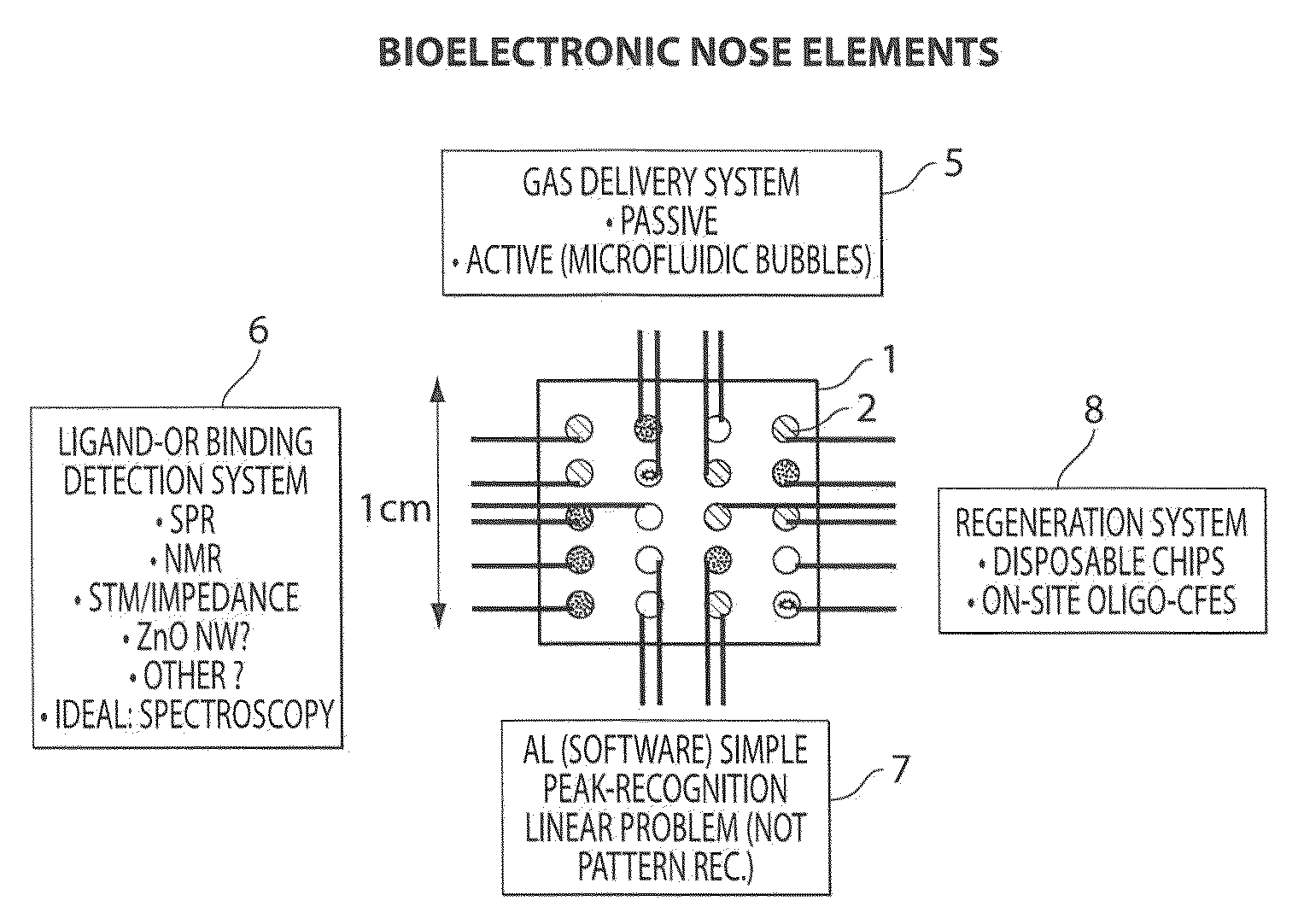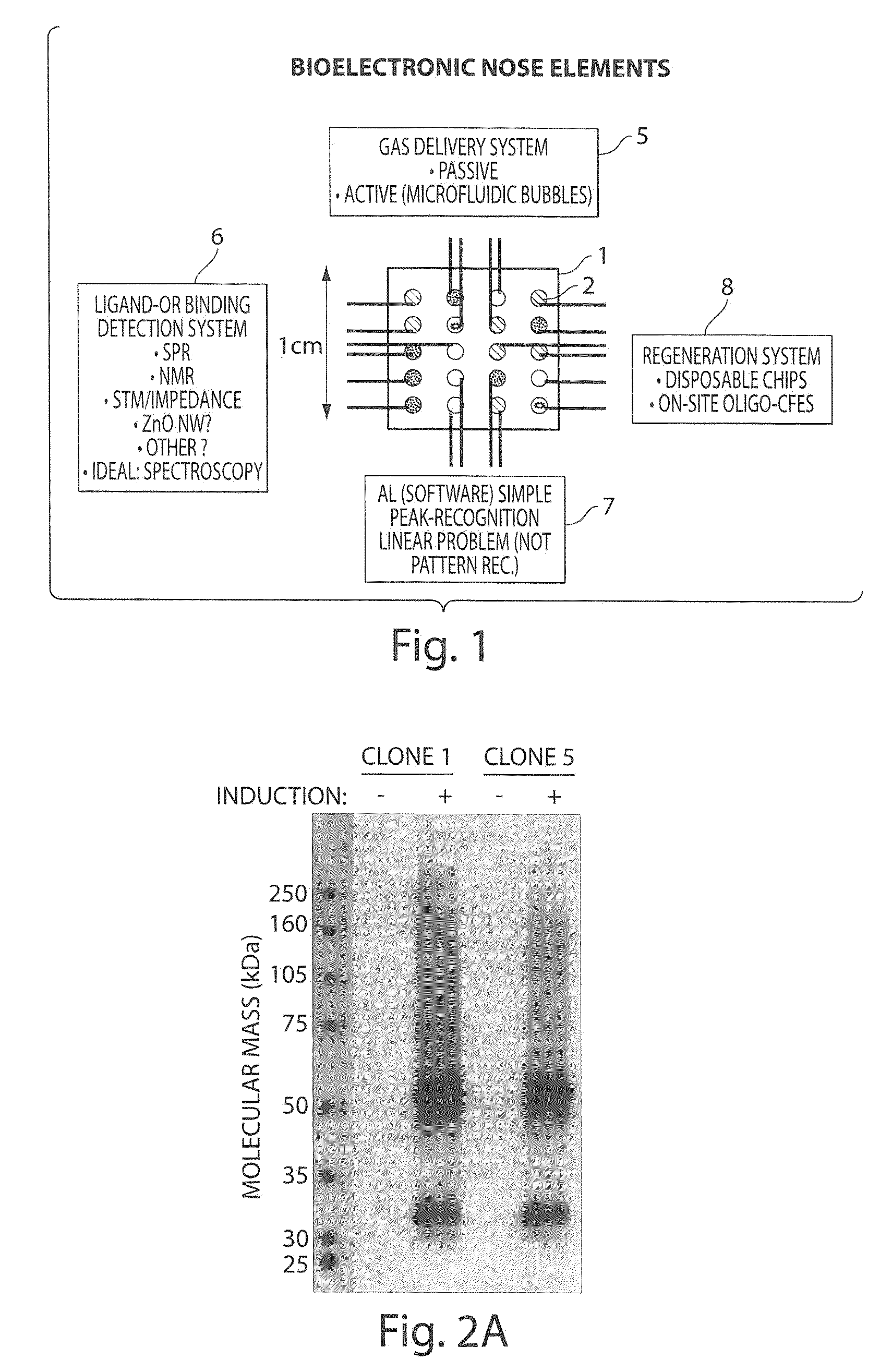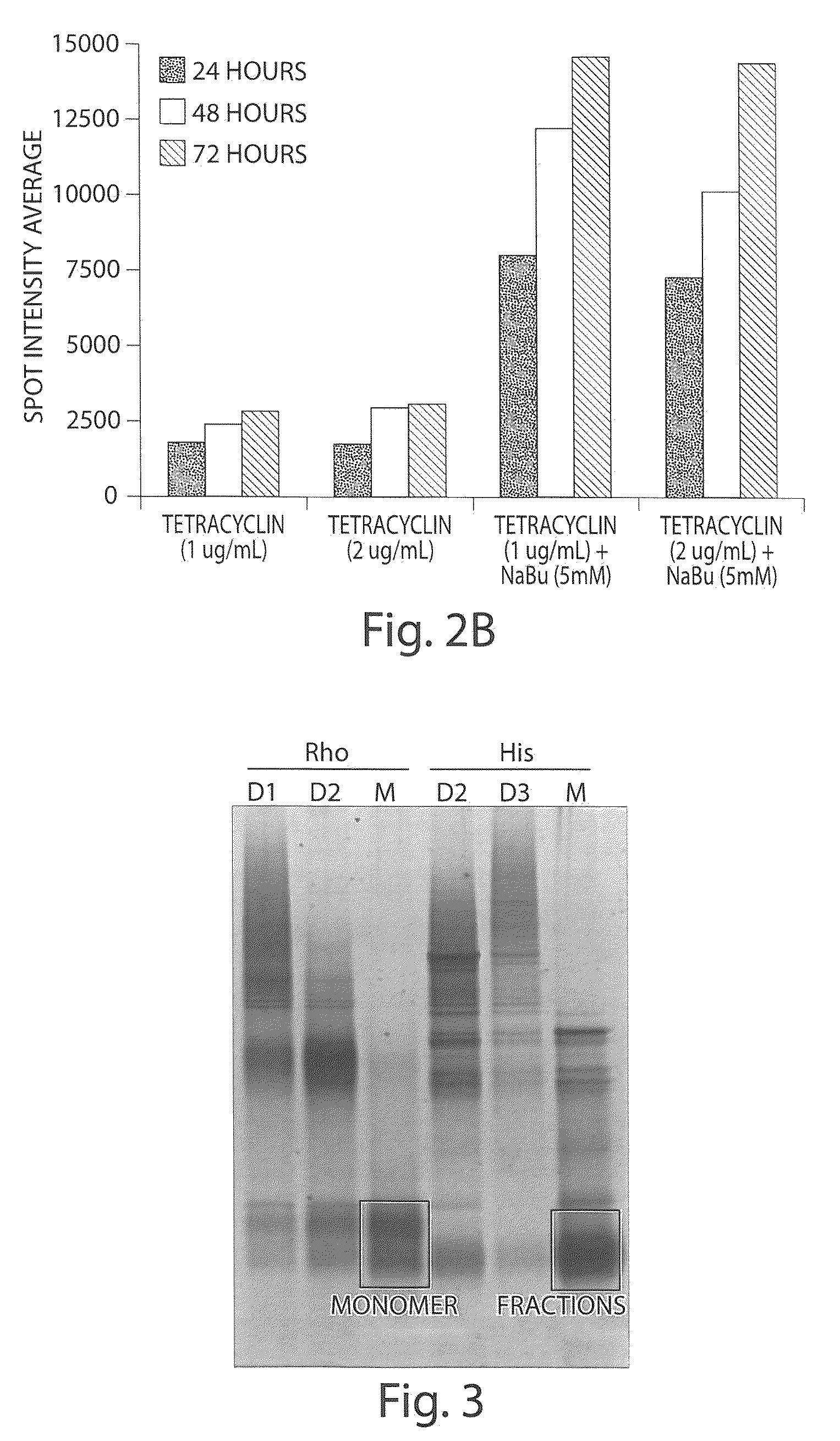Multiplexed olfactory receptor-based microsurface plasmon polariton detector
a plasmon polariton and multi-olfactory receptor technology, applied in the field of bioelectronics, can solve the problems of many limitations in the system, and achieve the effect of reducing agents
- Summary
- Abstract
- Description
- Claims
- Application Information
AI Technical Summary
Benefits of technology
Problems solved by technology
Method used
Image
Examples
example 1
Production of Human Smell Receptor in Cell Free Expression System
[0123]Genes coding for human smell receptor 17-4 (hOR17-4) and production constructs for expression in cell-free systems, bacteria (E. coli) and yeast have been molecular engineered using a high-cycle number PCR-based method of gene synthesis. This method has also enabled us to achieve optimal codon usage in the different production systems.
[0124]One advantage of using a cell free system for production of membrane proteins is that surfactants can be present during translation and folding of the protein. By using the constructs mentioned above, the optimal surfactant and surfactant concentration for production of soluble receptor has been identified. Interestingly the addition of a stabilizing peptide surfactants developed in our lab significantly enhanced production levels at least five fold. The receptor has been partially purified using affinity purification, based on a tag engineered to the N-terminal of the protein...
example 2
Large Scale Production of Smell Receptor in Yeast
Pichia pastoris as Expression System
[0127]The methylotrophic yeast Pichia pastoris has been used for many years for producing a wide range of recombinant proteins. This Pichia pastoris production system has a highly inducible promoter (methanol). Genomic integration of the production cassette has the advantage that the production vector will not be lost on induction. Yeast Pichia pastoris is particularly efficient, it grows rapidly, reaches high cell densities, does not make hyperglycosylation and possesses extremely efficient secretory machinery. Several similar receptors to smell receptors have been functionally produced in Pichia pastoris. Expression levels vary from 0.4-100 pmol / mg membrane proteins.
Production of Smell Receptor in Pichia pastoris
[0128]Our results showed that we could successfully produce the smell receptor hOR17-4 in Pichia pastoris. This is the first time, to our knowledge, that a smell receptor has been express...
example 3
Large-Scale Mammalian Cell Line Production of Smell Receptors
[0129]Optimization of the extraction procedure for smell receptors transiently produced in the mammalian cell line HEK293S. The research was focused on several areas in order to enable the mass production of smell receptors. First, we engineered and constructed new producer cell lines in which production of the smell receptor can be directly controlled (a so called “inducible” system). This allows large-scale cell culture batches to be grown and then, when desired, concerted production of fresh smell receptor to be induced in 100% of the cells, with minimal toxicity.
[0130]To obtain the highest amount of smell receptors, we have also optimized the induction protocol for each cell line generated with respect to time, concentration of inducer (tetracycline), and addition of a synergistic enhancer (sodium butyrate=NaBu). The results of the optimization are shown in FIG. 2.
[0131]Using this protocol, we carried out a medium-scal...
PUM
| Property | Measurement | Unit |
|---|---|---|
| flow rate | aaaaa | aaaaa |
| pH | aaaaa | aaaaa |
| concentration | aaaaa | aaaaa |
Abstract
Description
Claims
Application Information
 Login to View More
Login to View More - R&D
- Intellectual Property
- Life Sciences
- Materials
- Tech Scout
- Unparalleled Data Quality
- Higher Quality Content
- 60% Fewer Hallucinations
Browse by: Latest US Patents, China's latest patents, Technical Efficacy Thesaurus, Application Domain, Technology Topic, Popular Technical Reports.
© 2025 PatSnap. All rights reserved.Legal|Privacy policy|Modern Slavery Act Transparency Statement|Sitemap|About US| Contact US: help@patsnap.com



